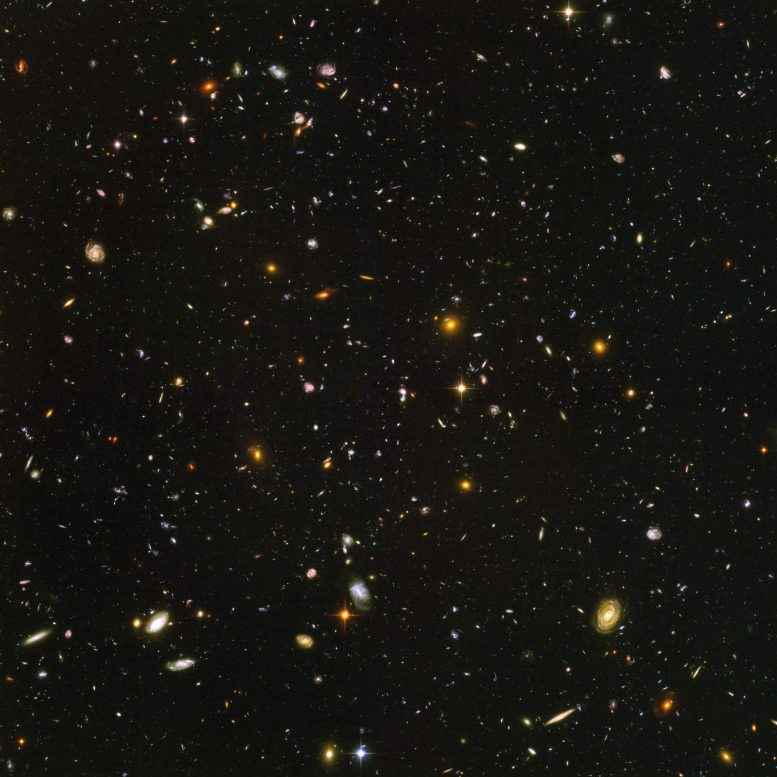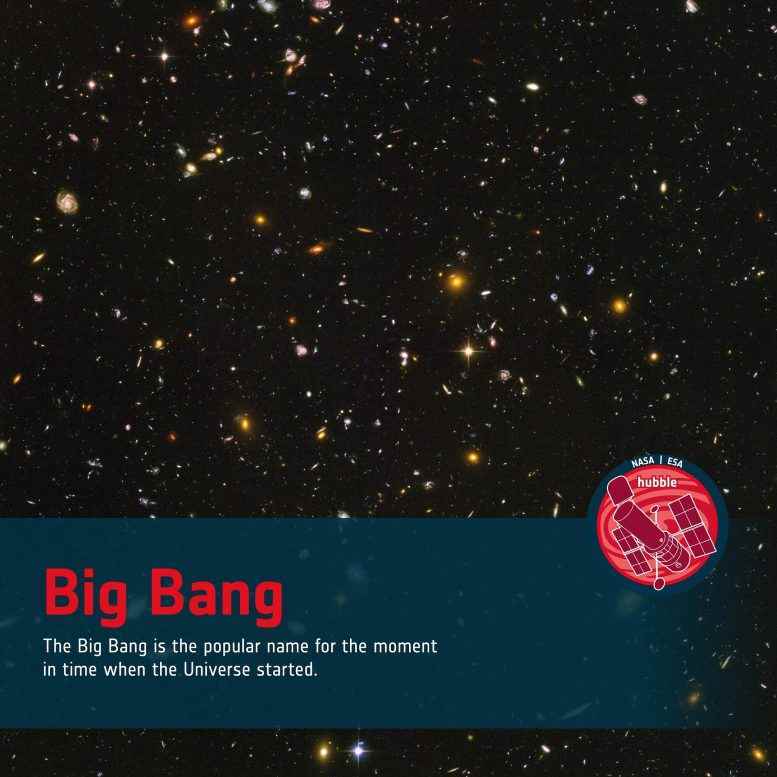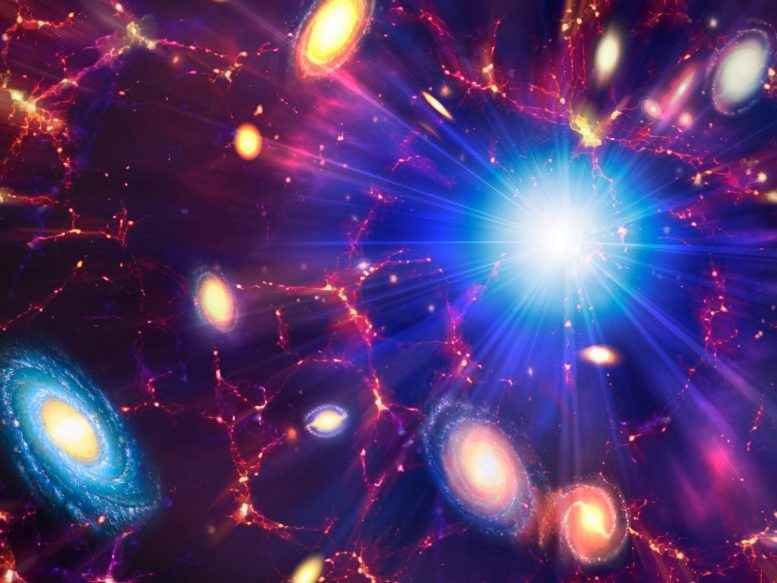Sanatçının Big Bang kavramı.
bu[{” attribute=””>Big Bang is the popular name for the moment in time when the Universe started
The term ‘Big Bang’ is often taken to refer to the moment that our Universe began, and it evokes the idea that our Universe started with a literal explosion. In fact, the Big Bang refers to the early stages of the birth of our Universe in the context of the model that describes the evolution of our Universe from an unknown point-like gravitational singularity into the vast expanse of still-expanding space that exists today. The theory of an expanding, changing Universe contrasts with the ‘steady-state’ theory of the Universe, which proposes that the Universe has always existed, and will always exist, with the same average properties.
The term the Big Bang itself was coined by the English astronomer Fred Hoyle during a 1949 BBC radio broadcast. It is often said that Hoyle intended the term to be derogatory, but he insisted it was just intended to evoke the enormous difference between the Big Bang and steady-state models. It certainly did, because the name stuck. The Big Bang theory was in fact not widely accepted until the second half of the twentieth century. The discovery of the cosmic microwave background radiation did a lot to legitimize the theory, as it was predicted by its physics.

Galaxies, galaxies everywhere – as far as the NASA/ESA Hubble Space Telescope can see. This view of nearly 10,000 galaxies is the deepest visible-light image of the cosmos. Called the Hubble Ultra Deep Field, this galaxy-studded view represents a “deep” core sample of the universe, cutting across billions of light-years. Credit: NASA, ESA, and S. Beckwith (STScI) and the HUDF Team
The Hubble Space Telescope’s observations have helped astronomers to pinpoint more precisely the age of the Universe since the Big Bang, as this was one of the telescope’s primary science goals. Today we know the age of the Universe to a much higher precision than before Hubble: around 13.7 billion years.
Deep imagery from Hubble, including the Hubble Ultra Deep Field, has revealed the most distant galaxies ever observed. One of the main scientific justifications for building Hubble was to measure the size and age of the Universe and test theories about its origin. Deep images of faint galaxies give ‘fossil’ clues about how the Universe looked in the remote past and how it may have evolved with time. The Deep Fields gave astronomers the first really clear look back to the time when galaxies were forming, and marked a significant milestone in modern astronomy. Because of the time it has taken their light to reach us, we see some of these galaxies as they were just half a billion years after the Big Bang.
Big Bang, Evrenin başladığı anın popüler adıdır. Kredi: NASAESA ve S. Beckwith (STScI) ve HUDF Ekibi
Hubble tarafından tespit edilen en uzak nesne, bir dizi uzay aracının arka planında küçük bir ışık lekesi olarak görülen UDFj-39546284 adlı bir gökadadır. gözlemler 2009-2010 yıllarında yapılmıştır. Bu galaksiden gelen ışığın bize ulaşması 13,2 milyar yıl aldı – Büyük Patlama’ya giden yolun yaklaşık %96’sı. Bu başarı, Hubble Uzay Teleskobu’nu teknik yeteneğinin sınırına kadar zorladı. Nesne tanımlanmadan önce bir yıllık ayrıntılı analiz gerekliydi. Hubble Ultra Derin Alan. Nesne, Hubble pozlarında soluk bir yıldız ışığı noktası olarak görünüyor ve tek tek yıldızları Hubble tarafından çözülemese de, kanıtlar bunun 100-200 milyon yıl önce oluşmaya başlayan sıcak yıldızlardan oluşan kompakt bir gökada olduğunu gösteriyor. .

Kredi: NASA, ESA ve S. Beckwith (STScI) ve HUDF Ekibi
Hubble, Big Bang’e mümkün olduğunca yakın zamanlarda Evren’e göz atmak için, Evrendeki bilinen en eski ve en sönük gökadaların en büyük örneğini ortaya çıkarmak için kütleçekimsel merceklenmeden yararlanıyor. Bu gökadalardan bazıları Büyük Patlama’dan sadece 600 milyon yıl sonra oluştu ve Hubble tarafından keşfedilen diğer tüm gökadalardan daha sönük. Yakında çıkacak olan NASA/ESA/CSA James Webb Uzay Teleskobu tarafından Evren’in çok erken dönemlerine ait daha da uzak galaksilerin ortaya çıkarılması bekleniyor.

